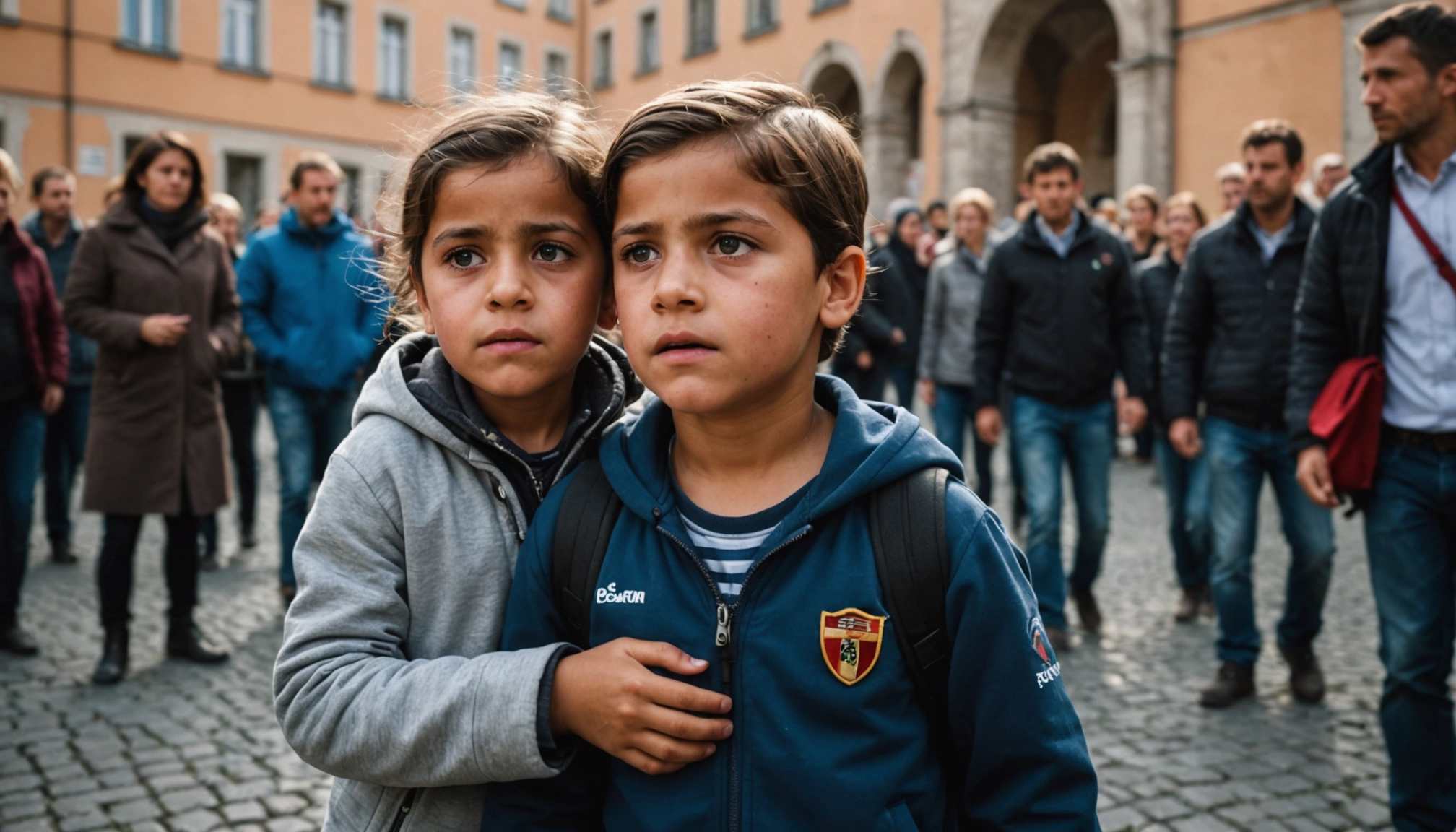Related Articles

Poland's Enduring Economic Ascent: A Central European Success Story




Despite being recognized as a national minority, children from the Sinti and Roma communities in Germany continue to face significant discrimination in various aspects of life, including education, housing, and interaction with state institutions. This systemic prejudice, fueled by historical biases and rising nationalism, creates barriers to equal opportunities and perpetuates a cycle of disadvantage for these vulnerable populations.
The Sinti and Roma have a long history in Germany, dating back centuries. They have faced persecution and marginalization throughout this time, culminating in the horrors of the Nazi era when they were systematically targeted for genocide. While the German government officially recognized the genocide of Sinti and Roma in 1982, anti-Roma sentiment, often termed "antigypsyism," persists in German society. Surveys consistently reveal high levels of intolerance towards Sinti and Roma, contributing to their ongoing discrimination.
One of the most critical areas where Sinti and Roma children experience discrimination is in the education system. Studies have shown that they are disproportionately placed in special education schools for children with disabilities, often based on subjective assessments by teachers influenced by antigypsyist prejudices. This segregation makes it difficult for them to access regular schooling, higher education, and vocational training, limiting their future prospects. Furthermore, Roma children from EU-mobile, migrant, or refugee families are frequently placed in separate classes for children with insufficient language skills, further isolating them from their peers. Attempts to exclude Roma and Sinti children from public schools by non-Roma and Sinti parents and teachers also aggravate the situation. This, coupled with the fear of forced assimilation and historical accounts of discrimination, contributes to higher rates of school absences and dropouts among these children.
Discrimination against Sinti and Roma extends beyond the education system and permeates various state institutions. Reports indicate that members of the Sinti and Roma communities are often treated unequally by employees of state institutions such as the police, youth welfare offices, job centers, and municipal administrations responsible for accommodating refugees. This institutional bias can manifest in various ways, including discriminatory practices in housing, employment, and access to social services. A recent report highlighted that about half of the recorded cases of discrimination against Roma and Sinti occurred at the institutional level.
Access to adequate housing remains a significant challenge for Roma in Germany. Many continue to live segregated from mainstream German society, often in substandard conditions. This segregation reinforces social exclusion and limits opportunities for integration. The lack of a stable and suitable living environment can also negatively impact children's well-being and educational outcomes.
The Central Council of German Sinti and Roma has warned that increasing nationalism and right-wing extremism are contributing to violence and discrimination against minorities in Germany, including the Sinti and Roma. This trend is reflected in the rising number of reported incidents of discrimination and hate crimes against the community. In 2022, the Central Council recorded 621 incidents, including threats, attacks, and one case of extreme violence where people were shot at with a compressed air weapon.
While Germany has legal and policy frameworks in place to protect national minorities, including the Sinti and Roma, the effectiveness of these measures is often undermined by persistent societal prejudice and institutional biases. The federal government officially recognized Roma and Sinti as a national minority in 1997 and called on provincial governments to include them in their provisions for minorities. However, the Central Council of German Roma and Sinti has opposed special regulations that could encourage segregation and discrimination.
The discrimination faced by Sinti and Roma children in Germany is a complex issue rooted in historical prejudice, societal biases, and institutional shortcomings. Addressing this problem requires a multi-faceted approach that includes combating antigypsyism, promoting inclusive education, ensuring equal access to housing and social services, and strengthening legal protections. It is crucial for the German government and civil society to work together to create a more just and equitable society where all children, regardless of their ethnic background, have the opportunity to thrive. Failure to do so will perpetuate the cycle of disadvantage and undermine Germany's commitment to human rights and equality.